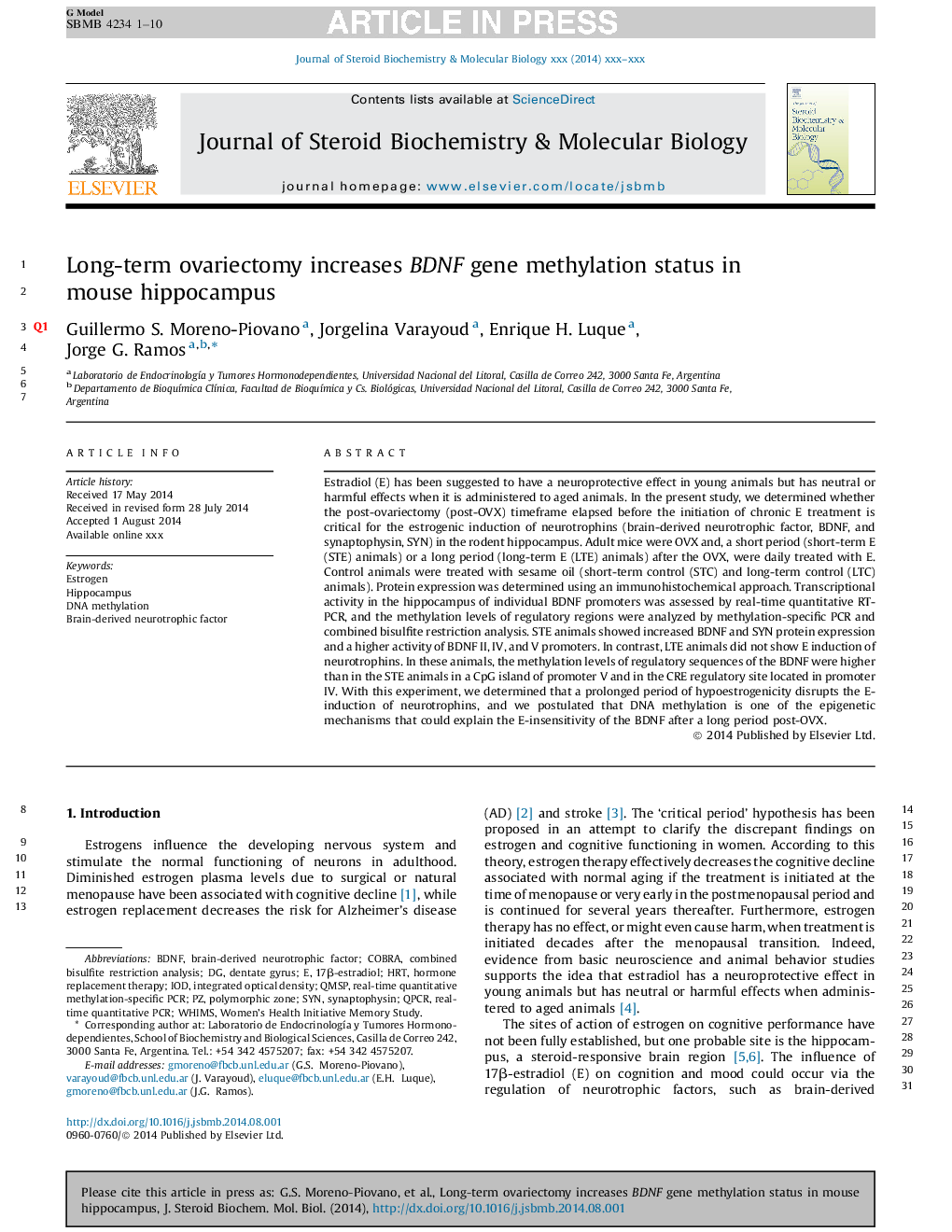| Article ID | Journal | Published Year | Pages | File Type |
|---|---|---|---|---|
| 8338347 | The Journal of Steroid Biochemistry and Molecular Biology | 2014 | 10 Pages |
Abstract
Estradiol (E) has been suggested to have a neuroprotective effect in young animals but has neutral or harmful effects when it is administered to aged animals. In the present study, we determined whether the post-ovariectomy (post-OVX) timeframe elapsed before the initiation of chronic E treatment is critical for the estrogenic induction of neurotrophins (brain-derived neurotrophic factor, BDNF, and synaptophysin, SYN) in the rodent hippocampus. Adult mice were OVX and, a short period (short-term E (STE) animals) or a long period (long-term E (LTE) animals) after the OVX, were daily treated with E. Control animals were treated with sesame oil (short-term control (STC) and long-term control (LTC) animals). Protein expression was determined using an immunohistochemical approach. Transcriptional activity in the hippocampus of individual BDNF promoters was assessed by real-time quantitative RT-PCR, and the methylation levels of regulatory regions were analyzed by methylation-specific PCR and combined bisulfite restriction analysis. STE animals showed increased BDNF and SYN protein expression and a higher activity of BDNF II, IV, and V promoters. In contrast, LTE animals did not show E induction of neurotrophins. In these animals, the methylation levels of regulatory sequences of the BDNF were higher than in the STE animals in a CpG island of promoter V and in the CRE regulatory site located in promoter IV. With this experiment, we determined that a prolonged period of hypoestrogenicity disrupts the E-induction of neurotrophins, and we postulated that DNA methylation is one of the epigenetic mechanisms that could explain the E-insensitivity of the BDNF after a long period post-OVX.
Keywords
Related Topics
Life Sciences
Biochemistry, Genetics and Molecular Biology
Biochemistry
Authors
Guillermo S. Moreno-Piovano, Jorgelina Varayoud, Enrique H. Luque, Jorge G. Ramos,
